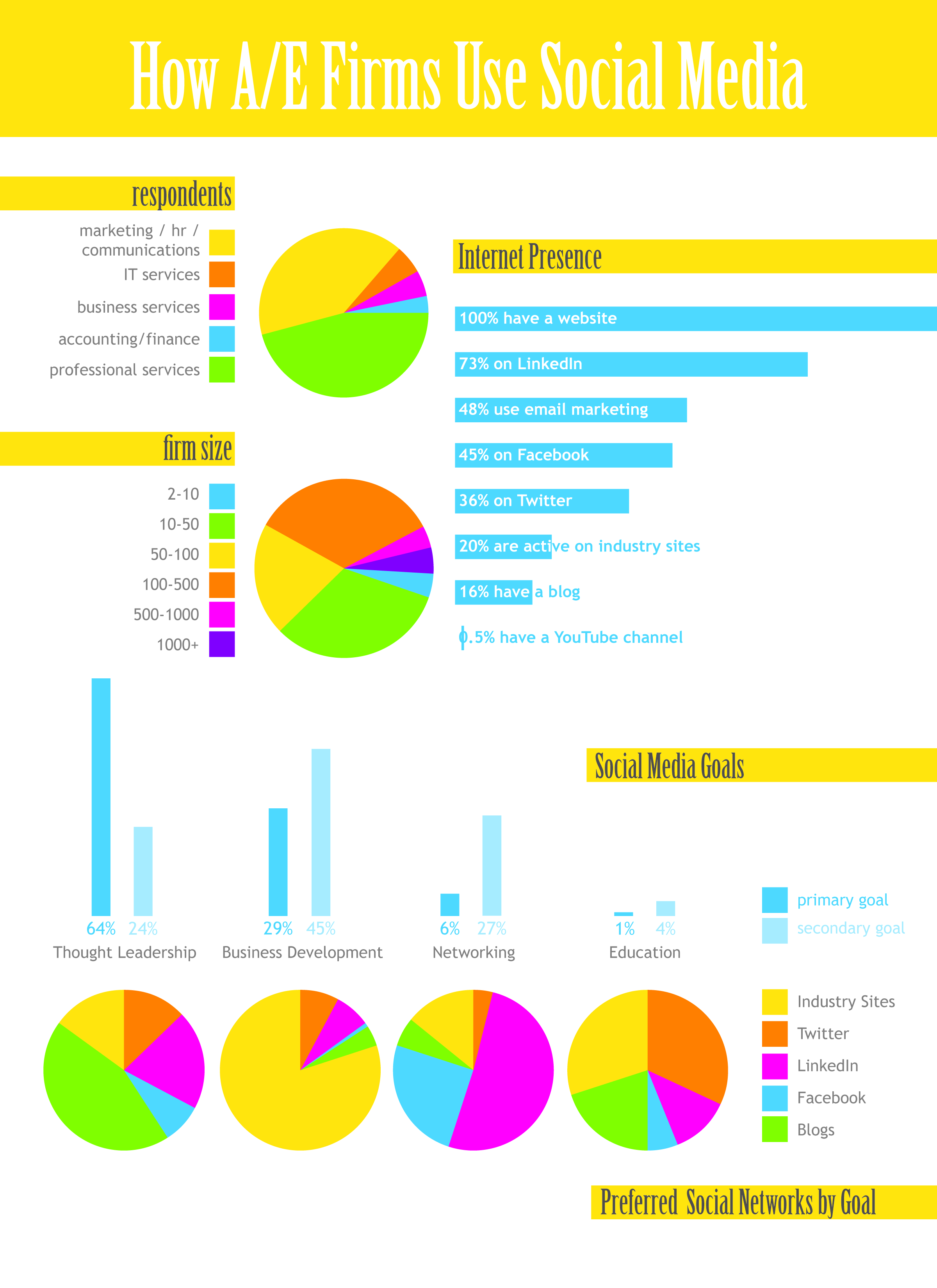Tips for Your Social Media Road Map
 While social media has become exceedingly accessible and appears to be simple as everyone is posting, tweeting and pinning, it’s important for firms to have clear goals and a mapped route for getting to these before embarking your firm’s social media experiment. Like any marketing or communications initiative, you won’t understand what social media can do for your business unless you have a plan.
While social media has become exceedingly accessible and appears to be simple as everyone is posting, tweeting and pinning, it’s important for firms to have clear goals and a mapped route for getting to these before embarking your firm’s social media experiment. Like any marketing or communications initiative, you won’t understand what social media can do for your business unless you have a plan.
I recently attended a social media webinar hosted by Jason Falls, coauthor of No Bullshit Social Media: The All-Business No-Hype Guide to Social Media Marketing and founder of Social Media Explorer. The crux of his presentation was that businesses need a strategic planning process that incorporates social media marketing business drivers for success. With a plan you can build, define goals, measure, execute and engage in tactics. Having a plan is a fundamental imperative for you to get what you want out of social media.
Granted, Falls is focused almost exclusively on B-to-C, so here are the nuggets of value that can be applied to the landscape, architecture, engineering and development world of professional services.
What can social media do for your firm? Once you understand what social media can do for your firm, you can assess what is achievable and how to fit this into your business goals.
Falls cites seven drivers of social media:
- Enhance branding and awareness
- Protect your reputation
- Expand public relations
- Build community
- Enhance customer service
- Facilitate research and development
- Drive sales and leads
You should decide which of these drivers are most important for your firm. If you focus on more than one, which is more than likely, you’ll have to assess your resources and budget.
Now that you know what social media can do for your firm, you can develop a strategic plan. But just how do you approach the strategic planning process in social media?
Falls defines a strategic planning process as the following:
“A strategic planning process delivers a set of defined initiatives (projects) that achieve a desired set of business goals.” – Dennis McDonald, technology expert
According to Falls, there are four things needed for a solid strategic plan:
- Clearly defined goals
- Measurable objectives for each goal
- Strategies to meet objectives
- Tactics/tasks to accomplish strategies.
When defining goals, each goal should have a singular focus instead of multiple ones. It’s very likely you will have more than one goal. Goals should support your strategic plan. Examples of goals include increase website traffic, increase online sales, decrease negative online sentiment, capture consumer insight and improve search results.
For most AEC firms, a strong content strategy will show prospective clients, competitors and the public what their firm does. Your firm may want to develop a content strategy that features work, the process of a project, a firm’s personality or project awards. Does your firm offer specialized areas of expertise? A solid content strategy may be a good opportunity to showcase these subject areas. Your content strategy could also show related work … Are there assets that you use internally that may be useful to your public audience such as a photo library, product data or original or aggregated research? Again, these may be valuable to showcase as part of a strategy, but it supports the drivers of social media such as building a community or enhancing public relations.
According to Falls, another key element in making the strategy successful is to ensure that objectives support the following:
- Point to one of three things, which is especially critical in the public relations world
- Have a result or outputs which in most cases is content or product
- Have outtakes such as information or entertainment
- Have outcomes such as a change in metrics
- Indicate a target audience
- List an expected level of attainment
- Identify a deadline or timeframe
One of the AEC industry’s biggest misconceptions about social media is that these networks are just another newsroom to post information and news. Social media goes beyond that – it’s not all about your firm’s accomplishments and announcements. One of the most important drivers of social media is building community. This means interaction. It’s about getting to know your followers and fans and engaging with them so you can create content that connects with them and learn what they are doing as well. If you promote their feats and successes, they in turn will talk about your firm’s accomplishments in their circles, expanding your audience and stakeholders.
Weekly Roundup for Week of April 30
 2012 National Design Winners. The Smithsonian's Cooper-Hewitt has announced winners of the 13th annual National Design Awards, a program established to promote excellence and innovation in design.
2012 National Design Award recipients:
2012 National Design Winners. The Smithsonian's Cooper-Hewitt has announced winners of the 13th annual National Design Awards, a program established to promote excellence and innovation in design.
2012 National Design Award recipients:
- Lifetime Achievement: Richard Saul Wurman
- Design Mind: Janine Benyus
- Corporate and Institutional Achievement: Design that Matters
- Architecture Design: Mack Scogin Merrill Elam Architects
- Communication Design: Rebeca Mendez
- Fashion Design: Thom Browne
- Interaction Design: Evan Roth
- Interior Design: Clive Wilkinson Architects
- Landscape Architecture: Stoss Landscape Urbanism
- Product Design: Scott Wilson
Via ArtDaily
Lackluster Expo Line. Los Angeles Times’ architecture review says Los Angeles’ Expo Line is a mix of architectural goals that never fully meshes into one unifying concept.
“The stations seemingly want to disappear into the cityscape and at the same time assert a Big Metaphorical Idea about what public transit means for Los Angeles. And in trying to do both, of course, they do neither.” - Christopher Hawthorne, Los Angeles Times Architecture Critic
Via LA Times
Straying from Convention. Despite declining attendance and revenue, many cities are expanding convention centers or building new ones.
Dozens of cities have been building new centers or enlarging old ones. In the last year alone, Indianapolis and Philadelphia have opened sprawling new centers, while plans for such facilities are being floated in Baltimore, Los Angeles, San Francisco, Seattle and Boston.
BIG Wins in Seoul. Bjarke Ingels Group’s hash-shaped residential block will contribute to the developing skyline of Seoul and become a recognizable marker of the new cultural and commercial center of the city.
“The Cross # Towers constitute a three-dimensional urban community of interlocking horizontal and vertical towers. Three public bridges connect two slender towers at different levels - underground, at the street and in the sky. Catering to the demands and desires of different residents, age groups and cultures the bridges are landscaped and equipped for a variety of activities traditionally restricted to the ground. ” -Bjarke Ingels, Founding Partner, BIG.
“Invaluable” Guide for A/E. In the ArchNewsNow book review of “Social Media in Action”, Architecture Critic George Calys describes the book as “invaluable for practitioners who realize that social media is not a passing phenomenon and can play a part in their business.”
Via ArchNewsNow
A Marketing Revolution for AEC
It wasn’t that long ago when the architecture, engineering and construction (AEC) industries looked down on the idea of marketing and self-promotion. For the most part that has changed today, but in many firms the role of marketing is still dominated by proposal generation leaving little time remaining for analytical thinking about markets and audiences. The industry continues to be behind the curve as compared to other professional service fields.
The role of the web in AEC marketing is no exception. Having a presence online is the norm. Every firm has a website, because everyone expects to find your firm online. While each day, more AEC firms are adding social media tools into their online mix, many more are still reluctant to commit, clinging to the myths about social media’s relevance and purpose.
But even the firms that have embraced social media wholeheartedly tend to be using it as a soft sell compared to the online marketing machines that are bringing in new leads daily for other professional service industries. According to Hinge Marketing’s recent report “Online Marketing for Professional Services Firms,” purchasing decisions are influenced by social media – videos, testimonials, photos, stories. These are the elements that distinguish one firm from another. If a prospective client searches for you online, and you’re not there, they will find your competitor.
The report focuses on five professional services groups – marketing/communications, technology services, management consulting and accounting finance and AEC – and suggests that there is a connection between online lead generation and the growth and profitability of a company. Of the professional services firms they surveyed, those that generate a higher percentage of leads online grow faster and are more profitable. Unfortunately, they also found that very few AEC firms generate online leads at the benchmark rate of 40% or more and that AEC has the lowest growth rate out of all the surveyed professional service industries.
Could this be because of its low level of online lead generation?
The AEC firms that were more active online, developed a community and showcased unique assets such as a video saw an increase in new clients and more positive mentions about them online. One featured case study that supports the connection between online lead generation and company growth is the architectural firm Modative. About 90% of Modative’s leads come through the website. The firm receives about four warm online leads a week and its web traffic has increased from 10 visits a week to 400 per day in a short time by using search engine data available through tools like Google Adwords to find good keywords that increased search engine traffic. Modative wrote several pieces of educational content on the topic of “small lot subdivisions” and uploaded to their website in their Resources section and requiring an email address to download each piece. This contact info is added to the firm’s list of leads and becomes part of their sales pipeline.
One fascinating twist in their findings is that the AEC industry uses social media for recruiting more than any of the other industries. Perhaps there are lessons AEC marketers can learn from colleagues in the recruiting department.
If architects and engineers follow the online marketing trends of other professional services groups, could the industry see exponential growth, profitability and a new way to do business?
What do you think? Is online marketing the future for your firm?
Friday Features: Weekly Roundup for the Week of April 2
We are starting a new series where we highlight some of our favorite news and online finds for the week. Please share!

Social Media Buzz: Mashable presents 9 key ways to add LinkedIn to your company’s website.
LinkedIn is not only the most useful social network for recruiting, but it’s also 277% more effective at generating leads than Facebook and Twitter. This article shows you how to make it easier for your website visitors to share information with their links, stay connected with your company and to get to know you better as well.
Rising Waters: The Washington Post writes about Architects exploring the design of floating homes as sea levels continue to rise in coastal cities.
“Climate change will require a radical shift within design practice from the solid-state view of landscape urbanism to the more dynamic, liquid-state view of waterscape urbanism.” - Danai Thaitakoo, landscape architect
related: Waterstudio.nl
100 Years Contest: AIA Florida celebrates its 100-year anniversary by finding out the public’s favorite Florida architecture.
Vote for your favorite building among 100 candidates.
related: AIA Florida
Reuse Renaissance: Downtown Los Angeles' retro-chic makeovers show how retail and restaurants can transform a neighborhood. By @Gluck in the Architect's Newspaper
"With an abundance of largely intact historical buildings, architects and designers have paid homage to the past by restoring or re-creating many of classic features while adding a modern sensibility."
related: Kelly Architects, Killefer Flammang Architects, SO/DA
Urban Debate: The New York Times asks, Should Los Angeles New Yorkify? A panel of urban designers, Angelenos and writers weigh in on the topic. By @RoomForDebate
"Millennials are embracing the urban lifestyle by the tens of thousands, especially along the Red Line subway between downtown Los Angeles and Hollywood (two neighborhoods that are every bit as urban as most of Manhattan and, in fact, often stand in for Manhattan in the movies)." - Bill Fulton, Smart Growth America
Sustainability Education: Eco-Structure features an architect’s story how he took parent participation to a new level by hosting a series of sustainability workshops at his son’s school.
"I have taught undergraduate and graduate students in many parts of the world, but few occasions have been as rewarding as this one for elementary school students. The children were excited to learn about ways in which they can protect the planet and build a better future." - Pablo La Roche, HMC Architects
related: HMC Architects, HMC ArchLab




